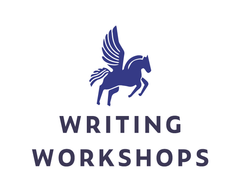Blog
My Holy Conversion from Pantser to Plotter by Alex Temblador
by Blake Kimzey
3 years ago
My Holy Conversion from Pantser to Plotter
I was once proud to be a pantser, an author who writes ‘by the seat of their pants.’ Write an outline? Nah. Know my plot before I began writing? Why bother. Have a list of characters? I’ll create it along the way.
This pantser pride only sought to showcase my own stubbornness and a false belief that writing a novel without planning the storyline was somehow better. I’ve recently learned it’s nothing to be proud about.
A novel is a momentous creative task. With so many moving parts – characters, setting, plot, subplots, rise and falls in action, internal thoughts, external dialogue – it’s no wonder that some people never complete their novel. Yet, I truly believe some books are never finished, not because writing a book takes some secret creative skill, but that some writers were like me: under the impression they didn’t need a plan before writing.
Earlier this year, I was on a panel with three other authors, all of whom were self-identified planners – authors who plan their novels using outlines. A few of those authors exalted a 15-part outline presented in Save the Cat! Writes a Novel. As the only pantser in the group, I told myself that outlines would stifle the creative flow as I wrote.
Recently, my literary agent and I were on a phone call and I told her about a story idea that I had. She asked me to craft an outline for her, since I couldn’t explain my idea for the plot. This was true. I hadn’t quite thought it through and hoped that the plot would reveal itself as I wrote. That wasn’t going to be good enough for my literary agent this time.
So, I used the Save the Cat Writes a Novel outline… and yes, it was as amazing as that panel of authors described.
Using the outline made it easy for me to plot out the story. If I dare say, it was even enjoyable to know what was going to happen in each section of the story before I even wrote the book. In just a few days, I’d become the one thing I had pushed away for so long: I was a planner.
As any new convert does, I preached the wonders of planning one’s novel on Twitter. My fellow panelists from earlier this year were like, “You’ve seen the light!” I had, and I wanted to show other writers how planning a novel beforehand can be the holy way to novel writing success.
So, I crafted a course called “Prep Your Novel,” and I’m offering it through Writing Workshops Dallas.
As a self-paced course, writers can sign up at anytime and have 30 days to complete it. This is not a class in which you are merely creating an outline for your book. Rather, I break down the major elements of a novel – characters, setting, research, plot, character development, outlines, and planning – across four lessons. Within each lesson, writers are asked to read articles about novel writing and complete 5-7 assignments, some of which involve making lists or answering questions, others that require writers to craft scenes or create outlines. Every assignment is intended to help the writer know everything they can about their book before writing, as well as understand the novel writing process.
Ultimately, once you complete the course, you’ll know far more about your characters and story than you did before. Plus, you’ll have the outlines, research, and information you need to sit down, write the novel, and finish it.
Just as every author must write their novel alone, this course is self-paced, meaning you don’t have weekly deadlines or other classmates. There is no instructor providing feedback to you on any of your assignments (unless you’d like to upgrade and request that I critique the first chapter of your novel at the end of the course).
You complete the course all on your own.
It’s not the easiest course. It will push you to think about stories, characters, setting, and plot in ways you never have. It will make you write scenes between characters that you may never use or approach your novel in ways you never thought you might. Most importantly, it will provide you with the structure that we all crave, and yet push away as if structure is a crutch rather than a golden ticket.
Creating this course has been a pleasure and more beneficial to my growth as an author than any other course I’ve taught. I’ve learned that ramming my head through a story in the hopes that I can make all the pieces fit was foolish, stubborn, and yes, I’ll admit, stupid.
Writing novels is only hard if we make it that way. Join me and the other disciples of ‘novel planning’ as we turn plans into books time after time.
If you’re interested in signing up for author Alex Temblador’s self-paced Prep Your Novel Course, click here.
